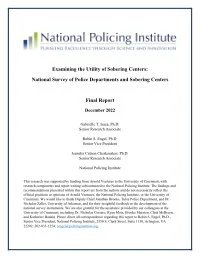By The Joint Federal/Provincial Commission into the April 2020 Nova Scotia Mass Casualty
In this volume, we describe the various processes involved in leading and designing the Mass Casualty Commission. The mass casualty of April 18 and 19, 2020, created profound grief, disruption, and destabilization in Nova Scotia and beyond. Early in our mandate, the Commission adopted the image and metaphor of rippled water to signify the breadth and depth of the impact of what happened over approximately 13 hours on April 18 to April 19, 2020, and in the aftermath. The ripple acknowledges that the immediate impact experienced by those most affected – the individuals, families, first responders, service providers, and local communities – was appropriately the starting point of our mandate. it also captures the dynamic impact of the mass casualty, which expanded outward and affected communities, institutions, and society in Nova Scotia, across Canada, in the United States, and further afield. The Commission saw every day how the mass casualty was a source of grief, bereavement, and trauma for many individuals, families, and communities. Some members of the Commission staff and their families live in Colchester, Cumberland, or Hants counties as well as throughout Nova Scotia. While acknowledging the unique nature and depth of loss for those whose loved ones were taken, regardless of where we live, the mass casualty to varying degrees affected everyone’s sense of safety, trust, and well-being. That impact will continue long past the conclusion of our mandate. As Commissioners, we were motivated by a desire to ensure that our collective work would provide answers and make positive contributions to community safety and well-being in the future. From our first days on the job we made a series of decisions about how best to carry out our mandate with the public interest at the forefront. in line with and throughout our mandate, we invited and endeavoured to seek and respond to input from directly affected Participants in the Commission’s process, while maintaining our independence. The mandate also directed that we not express any conclusion or recommendation regarding the civil or criminal liability of any person or organization. This direction was not unique to our inquiry; the Supreme Court of Canada has made clear that all public inquiries are prohibited by law from making any findings or conclusions regarding civil and criminal liability….
Halifax, NS: Joint Federal/Provincial Commission into the April 2020 Nova Scotia Mass Casualty, 2023. 294p.





















